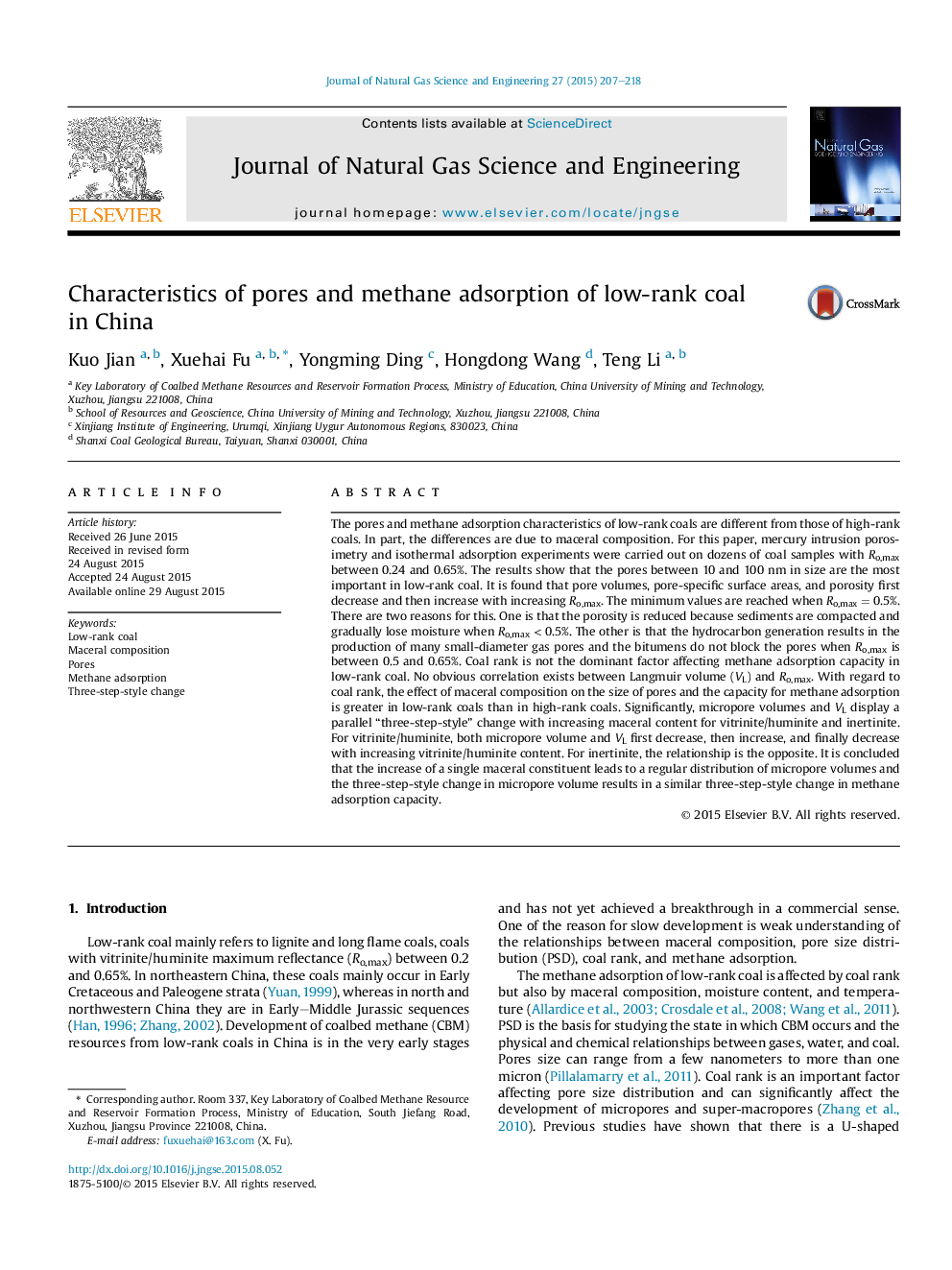| Article ID | Journal | Published Year | Pages | File Type |
|---|---|---|---|---|
| 1757473 | Journal of Natural Gas Science and Engineering | 2015 | 12 Pages |
Abstract
The pores and methane adsorption characteristics of low-rank coals are different from those of high-rank coals. In part, the differences are due to maceral composition. For this paper, mercury intrusion porosimetry and isothermal adsorption experiments were carried out on dozens of coal samples with Ro,max between 0.24 and 0.65%. The results show that the pores between 10 and 100 nm in size are the most important in low-rank coal. It is found that pore volumes, pore-specific surface areas, and porosity first decrease and then increase with increasing Ro,max. The minimum values are reached when Ro,max = 0.5%. There are two reasons for this. One is that the porosity is reduced because sediments are compacted and gradually lose moisture when Ro,max < 0.5%. The other is that the hydrocarbon generation results in the production of many small-diameter gas pores and the bitumens do not block the pores when Ro,max is between 0.5 and 0.65%. Coal rank is not the dominant factor affecting methane adsorption capacity in low-rank coal. No obvious correlation exists between Langmuir volume (VL) and Ro,max. With regard to coal rank, the effect of maceral composition on the size of pores and the capacity for methane adsorption is greater in low-rank coals than in high-rank coals. Significantly, micropore volumes and VL display a parallel “three-step-style” change with increasing maceral content for vitrinite/huminite and inertinite. For vitrinite/huminite, both micropore volume and VL first decrease, then increase, and finally decrease with increasing vitrinite/huminite content. For inertinite, the relationship is the opposite. It is concluded that the increase of a single maceral constituent leads to a regular distribution of micropore volumes and the three-step-style change in micropore volume results in a similar three-step-style change in methane adsorption capacity.
Related Topics
Physical Sciences and Engineering
Earth and Planetary Sciences
Earth and Planetary Sciences (General)
Authors
Kuo Jian, Xuehai Fu, Yongming Ding, Hongdong Wang, Teng Li,
